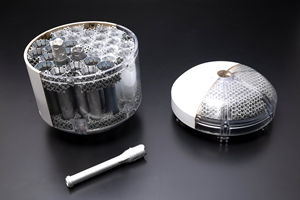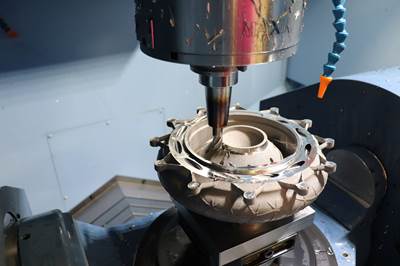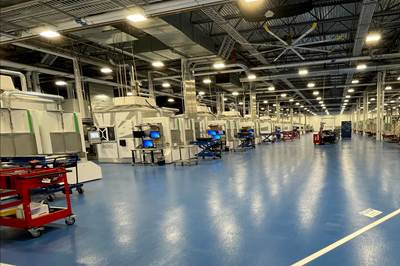Zeda AM Production Plant in Ohio Now Open — Thoughts on the New Facility
73,000-square-foot metal powder bed fusion plant includes extensive machining capability plus separate operational models for serving medical versus other businesses.
Share
Additive manufacturing contract producer Zeda has now officially opened its new 73,000-square-foot metal powder bed fusion production facility in Springdale, Ohio, near Cincinnati. We reported on the new purpose-built plant’s capabilities, workflow, advantages and initial production last year while the plant was under construction. More recently, in December 2023 (on the day before the initial opening), Zeda held an open house event where I spoke with company leaders including CEO Shri Shetty and chief medical officer Alan Dang.
Based on these conversations and the chance to now see the facility finished (or nearly so), here are some further observations about this plant and the factors likely to contribute to its success:

Laser powder bed fusion equipment includes machines from (among others) Velo3D and AddUp, which are seen here. Zeda has two of the large Velo3D Sapphire XC machines, the one at right and one other, that have been used to produce space-industry parts.
1. U.S. Production-Ready
The Zeda plant has not just metal 3D printing capability, but also sufficient capability in downstream operations — notably machining — to be extensively vertically integrated within this single site. This integration is an advantage for sensitive work that has to be assured of U.S. production. When I first visited the plant while it was still being set up, production of a defense-related part was already underway. With AM’s capability to consolidate what otherwise might be many components or operations into a single additive build, the combination of 3D printing plus machining and other postprocessing at Zeda amounts to something nearly like a complete domestic supply chain in a single building.
2. Enough Machining Capacity for … Machining
The plant’s machining capabilities seemingly go beyond what is strictly needed even for the work of the 10 or more laser and electron beam powder bed fusion machines currently in the facility. Machining capacity includes a palletized machining center system capable of unattended machining of sequential jobs and CNC Swiss-type machining capability that would not be applied to postprocessing AM parts (but does have a role machining hardware related to additive medical devices, the company says).
All of this points to the plant being able to accommodate and deliver work that is just machining in conjunction with using its machining capability to serve additive. AM in certain markets (such as defense) is subject to bursts of opportunity. Contract machining potentially offers a useful cushion and a leveling influence on activity and income.
(One company team member noted to me that this cash-flow-related consideration argues for diversity among AM markets as well. The company has visibility into aircraft part production opportunities apt to wait years for qualification. Against this, serving the space industry — which has immediate need for production, and qualification requirements that can be met more quickly — offers the chance to thrive and profit today.)
3. Different Business Models in Different Rooms
One of the component businesses that merged to become Zeda was the medical device maker PrinterPrezz, which initially operated in a facility in Fremont, California. The medical device component of Zeda today is Zeda Health, and this operates in a separate room in the Ohio facility.

Zeda Health performs implant production via AM through a process and workflow, largely contained within this room, that can be replicated to provide implant production in faraway locations.
In part, this separation is for scalability. While the core of Zeda serving defense, aerospace and other markets aims to integrate production in one site, Zeda Health aims to instead replicate production across many locations. Standing up an AM implant production unit able to operate within one compact room establishes a template that can be used to provide similar localized implant production operations in other countries. Thus, while one part of Zeda can promise purely domestic manufacturing, another part of the company aims to be international for the sake of offering local manufacturing to others.
(A useful side benefit is this: Zeda Health’s separation within the Ohio facility provides Zeda with a way to employ non-U.S. citizens but keep them away from controlled work where citizenship is a concern.)
Alan Dang was one of the founders of PrinterPrezz. He notes that the compact room only seems that way relative to the new Zeda facility. The Zeda Health area is a small percentage of the plant’s floorspace. Even so, “We thought we had a big space in Fremont,” he says, “but it all fits in there.”
Related Content
What is Powder Bed Fusion 3D Printing?
Whether in metal or polymer, with a laser or an electron beam, powder bed fusion (PBF) is one of the most widely used 3D printing techniques.
Read MoreDMG MORI: Build Plate “Pucks” Cut Postprocessing Time by 80%
For spinal implants and other small 3D printed parts made through laser powder bed fusion, separate clampable units resting within the build plate provide for easy transfer to a CNC lathe.
Read MoreVulcanForms Is Forging a New Model for Large-Scale Production (and It's More Than 3D Printing)
The MIT spinout leverages proprietary high-power laser powder bed fusion alongside machining in the context of digitized, cost-effective and “maniacally focused” production.
Read More3D Printed Lattice for Mars Sample Return Crash Landing: The Cool Parts Show Bonus
NASA Jet Propulsion Laboratory employs laser powder bed fusion additive manufacturing plus chemical etching to create strong, lightweight lattice structures optimized to protect rock samples from Mars during their violent arrival on earth.
Read MoreRead Next
Additive Manufacturing Is Subtractive, Too: How CNC Machining Integrates With AM (Includes Video)
For Keselowski Advanced Manufacturing, succeeding with laser powder bed fusion as a production process means developing a machine shop that is responsive to, and moves at the pacing of, metal 3D printing.
Read MoreThe Arrival of the AM Factory: How Proprietary Processes Deliver Production 3D Printing
Various recent articles report on companies using internally developed technology to equip factories and deliver on the promise of AM for production.
Read MoreVideo: Intelligent Layering Metal 3D Printing at 3DEO
Contract manufacturer 3DEO delivers metal parts using Intelligent Layering, a binder jetting-like 3D printing process the company developed and operates internally. Here’s how it works.
Read More

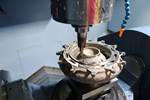
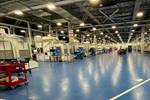









.png;maxWidth=300;quality=90)






